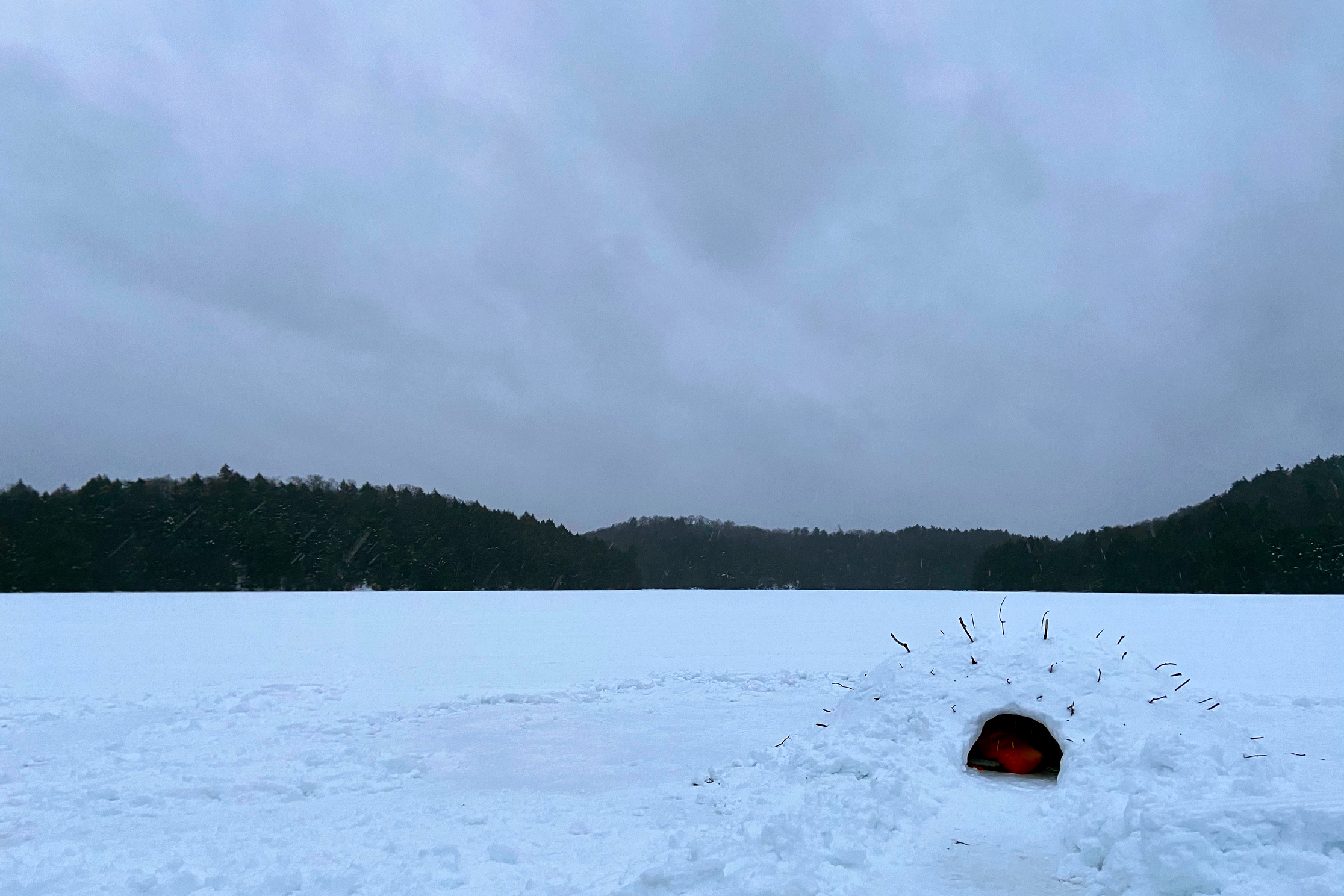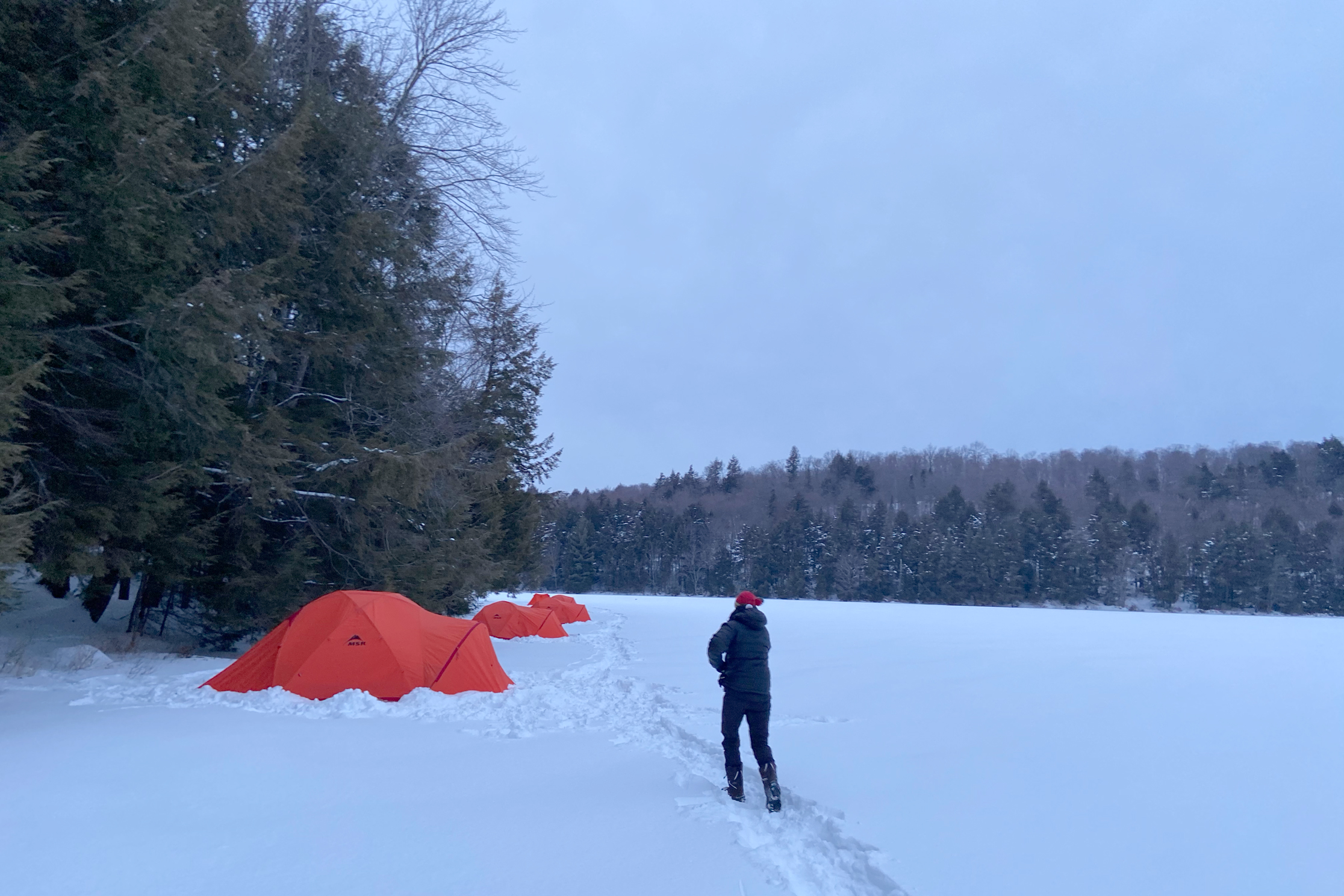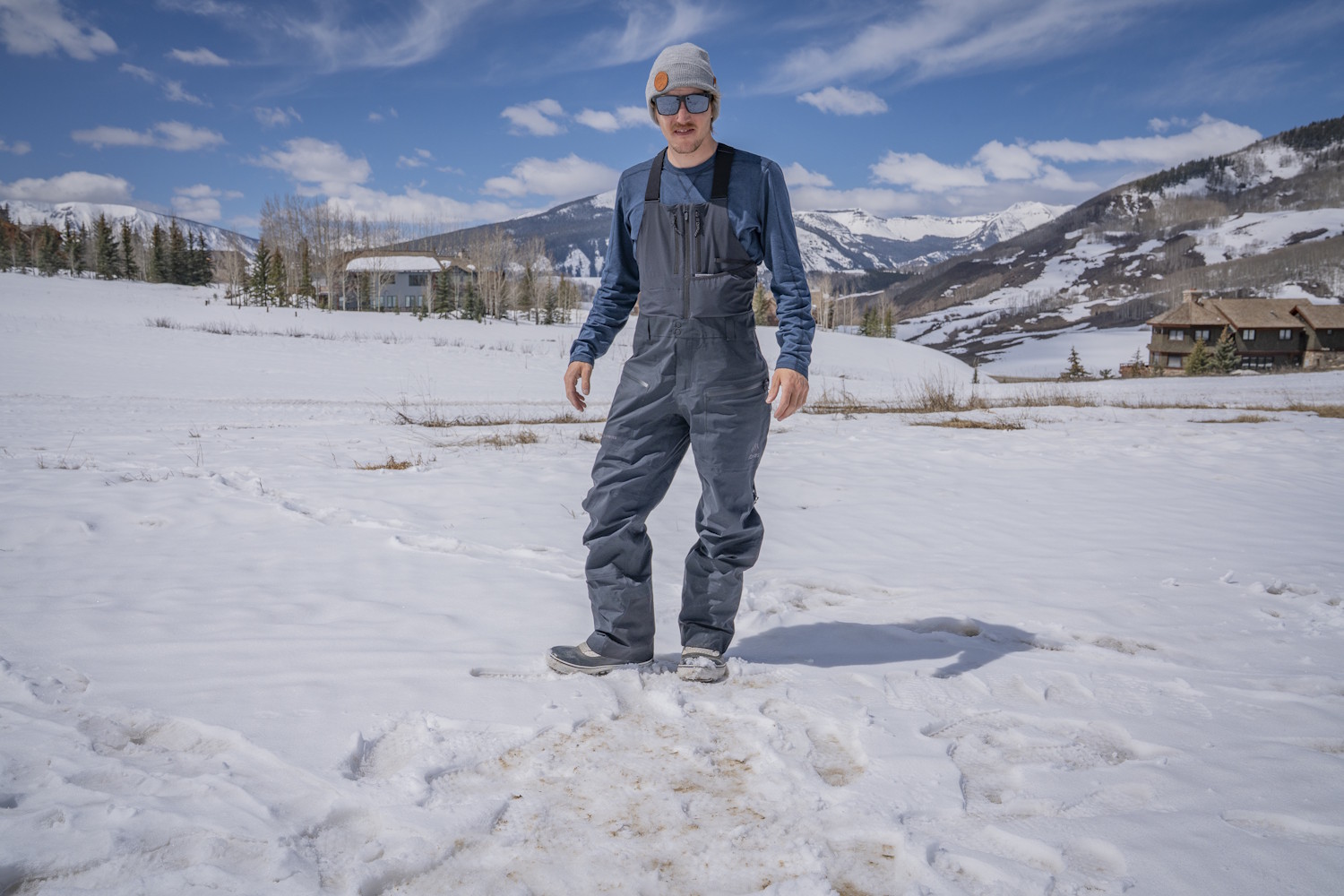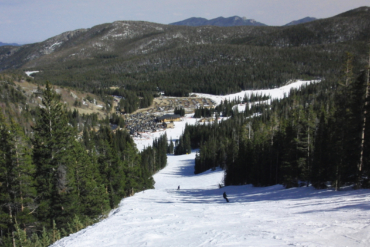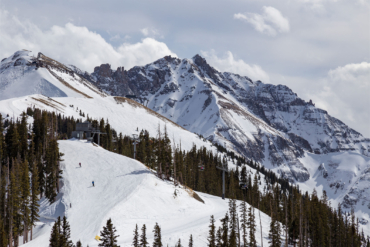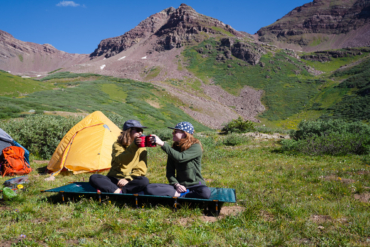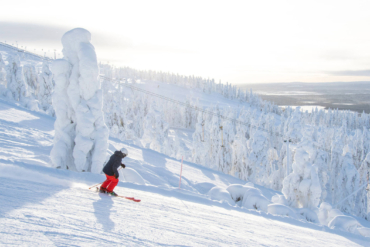Take it from someone who’s made a living traversing both poles by bike, ski, boot, and dogsled: Being cold sucks. Here’s how extreme explorer Eric Larsen beats Old Man Winter at the camping game.
Eric Larsen spends his winters engaged in gnarly, frigid exploits in some of the most bitter and remote parts of the planet. Among other adventures, he’s skied to both the North and South poles, dogsledded to the Hudson Bay, fat biked in the Antarctic, and summited Mt. Denali — often in -50-degree weather or colder.
But contrary to what you might easily assume about Larsen, this polar adventurer, winter expeditioner, and professional cold-weather freak really dislikes being cold.
“Oh yeah, I hate it,” he said, pausing for effect before adding, “What I like is being the perfect temperature in the most extreme conditions.”
That takes a combination of things — namely the right gear, the right frame of mind, and the right winter survival hacks. And Larsen has honed all of these to a fine edge over years of trial-and-error experience.
4 Expert Tips for Winter Camping
1. Great Boots Mean You Can Do Anything
“Making sure that you have the right boot for your activity is key,” Larsen said. “Great boots create warm feet; warm feet create a warm heart. And when your heart is warm, you can do anything.”

Larsen lives by this rule (hang out with him enough, and you’ll hear it a lot). He says that knowing what kind of boots to wear during any particular winter activity is crucial to sustaining your morale and even life itself.
Boots like the Baffin Borealis are perfect for something like snowshoeing or fat biking because they breathe well, Larsen explained.
They’re insulated with a body-heat-moldable Ultralite System and protected from moisture with a rubber shell. Plus, they have an insulated removable liner you can dry out inside a sleeping bag overnight.
Or, on his expeditions to the North Pole, Larsen only wears Baffin Guide Pros. He designed it with the Baffin team specifically to traverse some of the coldest, most inhospitable places on Earth.
These burly expedition boots, rated to -94 degrees Fahrenheit, feature an arctic rubber shell with an extended three-pin toe system and built-in waterproof gaiters.
“I make my North Pole clients wear those boots too,” he said. “You lose a lot of heat through conduction through your feet, especially if you’re standing around — but even if you’re just walking.”
Compromised feet compromise your heart — a recipe for winter disaster.
2. Regulate Your Body Temp or Die
When Larsen is moving through cold environments, he seems to be constantly adjusting things — opening waterproof zippers and exposing vents, pulling up ear flaps, jerking down sleeves, and opening or closing his jackets.
And when he stops, he throws on a big Baffin Polar Parka to trap his core heat close to his body with the coat’s 800-fill down.
Knowing how to regulate your body temperature like this, by regulating your gear, is a huge leg up when you’re traveling in the cold.
According to Larsen, sweat is your enemy. If you work up a good sweat while walking and then stop, with or without a parka, you’re going to freeze on your feet from the inside out. You will be miserable and, worse yet, you could die.
So, while knowing how to open up leg vents when your legs are getting warm, zipping up a jacket when a cold breeze picks up, or pulling up your hat when you feel sweat forming on your forehead might all seem intuitive (and maybe they are), they’re also things people tend to get lazy about. And your life quite literally depends on these things in really cold environments.
3. Craft a Cold-Weather Kitchen
“Your body is a furnace, and it needs fuel to run,” Larsen asserts. But in the negative double digits, eating isn’t always easy.
Foods you can chew while they’re frozen help a lot, he says. This could be precut, bite-size energy bars, oats, or good ol’ raisins and peanuts (GORP). Basically, you want anything you won’t break your teeth on or that will stay soft and edible inside an inner jacket pocket.
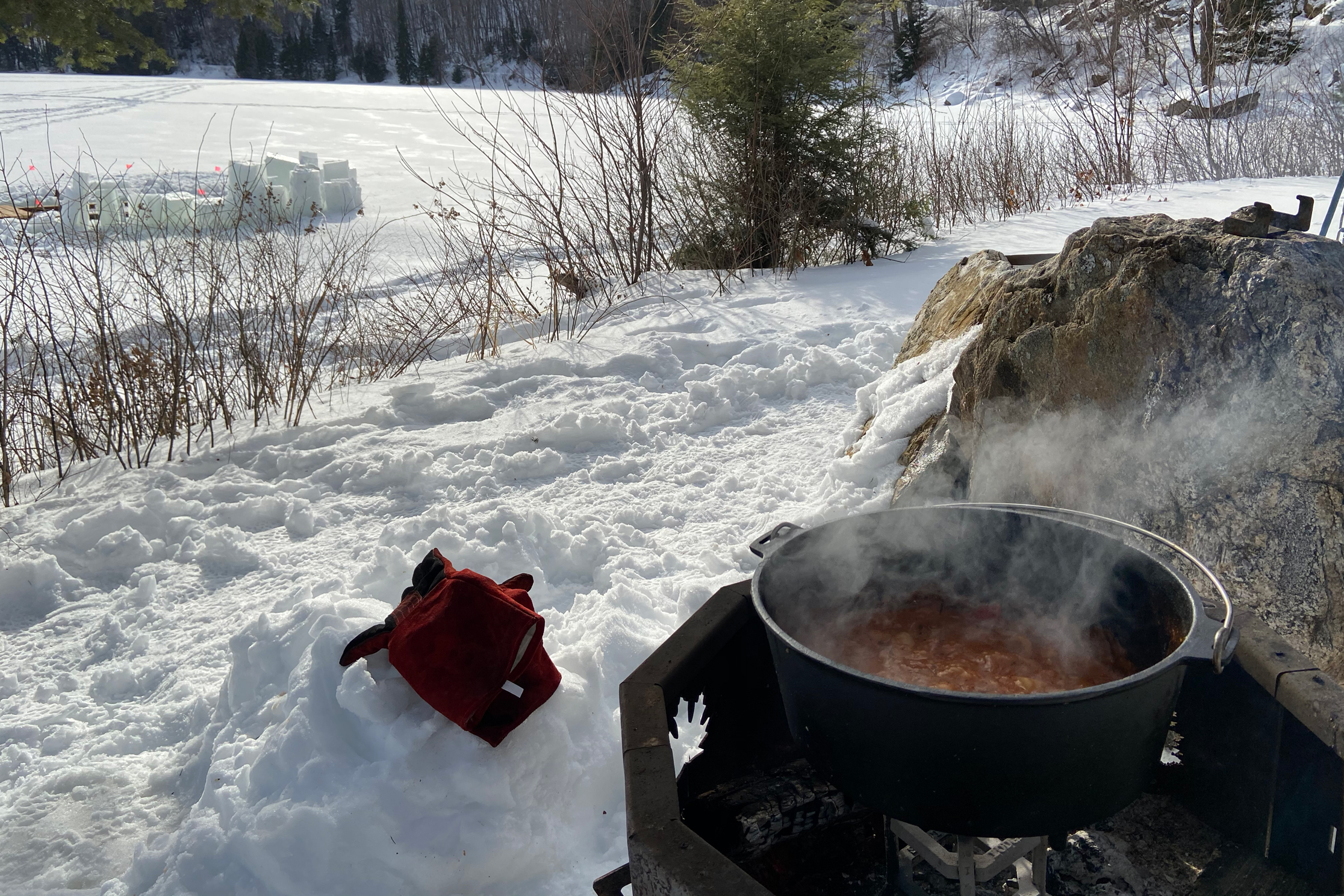
In cold weather, people also need to consume more fats, Larsen noted. So often, he adds butter or olive oil to his meals (dehydrated or otherwise) to up that fat intake. Fats provide long-lasting, slow-burning energy that will carry you through both day and night.
And Larsen loves his carbs — critics and naysayers be damned. To him, there’s nothing quite like a good salty dose of rehydrated noodles in the frozen backcountry.
“I’m also a big advocate of soup for any winter activity,” he added. Soup offers quick and easy calories, it’s got salts and fats, and it helps rehydrate people. Best of all, it stays hot in a good thermos and warms you up when you drink it. And that has almost as big a mental boost as a physical one.
Larsen said, “On a philosophical level, if I have a long day, that breaks it up, and I can look forward to eating that soup.”
4. Empty Bladder = Warm Heart
Next time you’re lying in a tent freezing cold with a full bladder and don’t want to unzip and brave the frigid world outside, just remember: You’d be warmer if you pissed.
Larsen is adamant about this. If you need to pee, do it — otherwise, you’re going to get cold.
The human body sends heat to a full bladder when it’s cold out (so it doesn’t freeze inside you). That takes heat away from your extremities. If your bladder is full, your heart gets cold. And, as mentioned in the first tip, things unravel when the heart is cold.
This is exactly why Larsen keeps a specially marked, wide-mouth pee bottle or jug inside his tent when he’s enduring the deep cold. With one of those trusty bottles, you won’t even have to leave the comfort of your sleeping bag to answer nature’s call.
Obviously, peeing on your side into a bottle in a sleeping bag isn’t so simple for anyone with female anatomy. But Larsen maintained that for women, it’s often still better to try and stay inside your tent (even if you do have to get out of your sleeping bag) than to expose yourself to polar conditions. Wide-mouthed pee bottles might not be a perfect solution, but they are an effective one for staying warm.
As he offered this suggestion, several other women acknowledged that this was already a practice they’d adopted for cold-weather car/van camping. And Alex Bunge, another arctic explorer and guide, added that when she’s in tents with a vestibule, she doesn’t even need a pee bottle; she simply uses the snow inside the vestibule to address nature’s call.
Whatever it takes, however or wherever, just keep that bladder empty to keep the body warm. Just, don’t fall asleep before you reseal the bottle! On this point, Larsen is very stern — we assume from experience.
